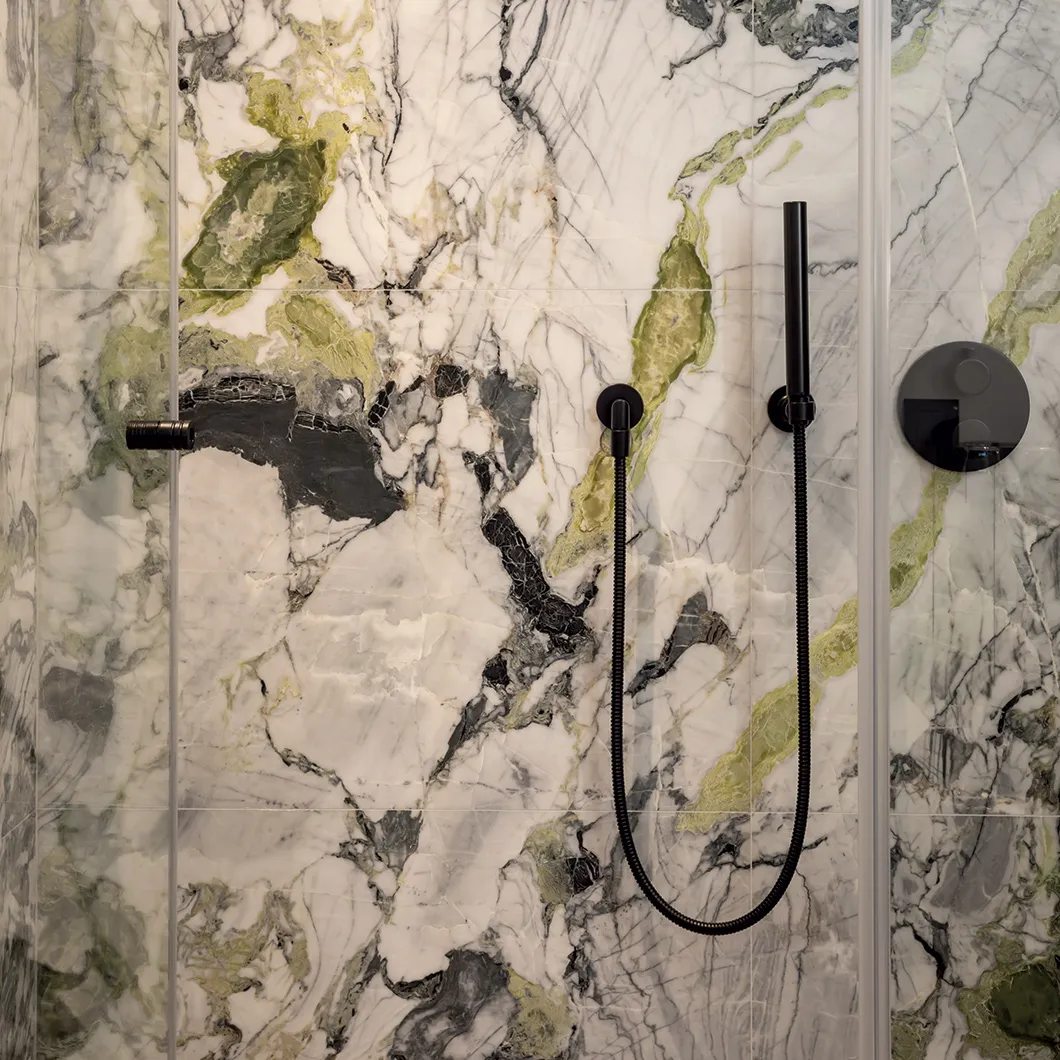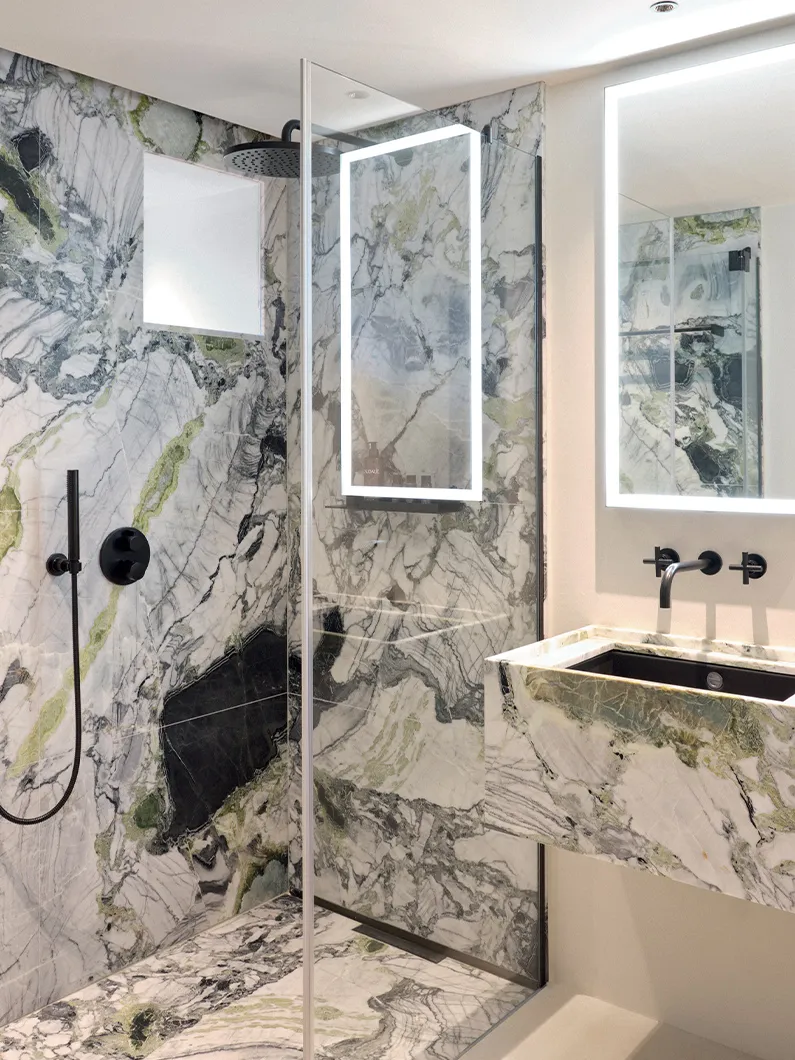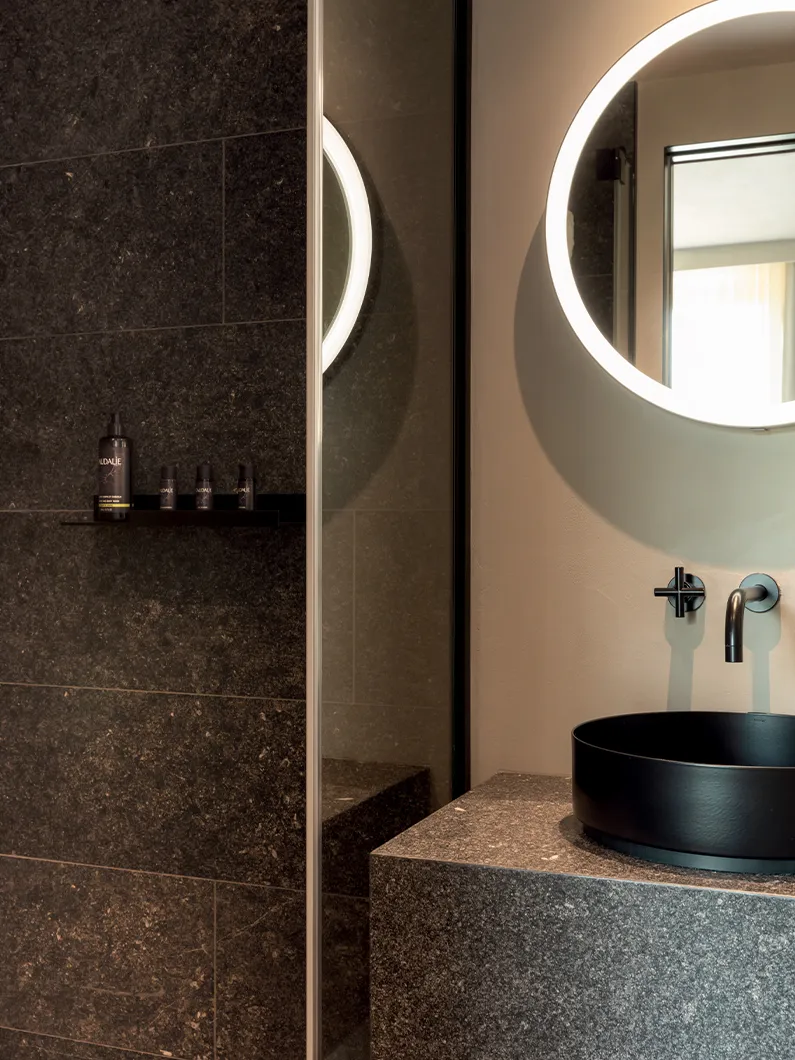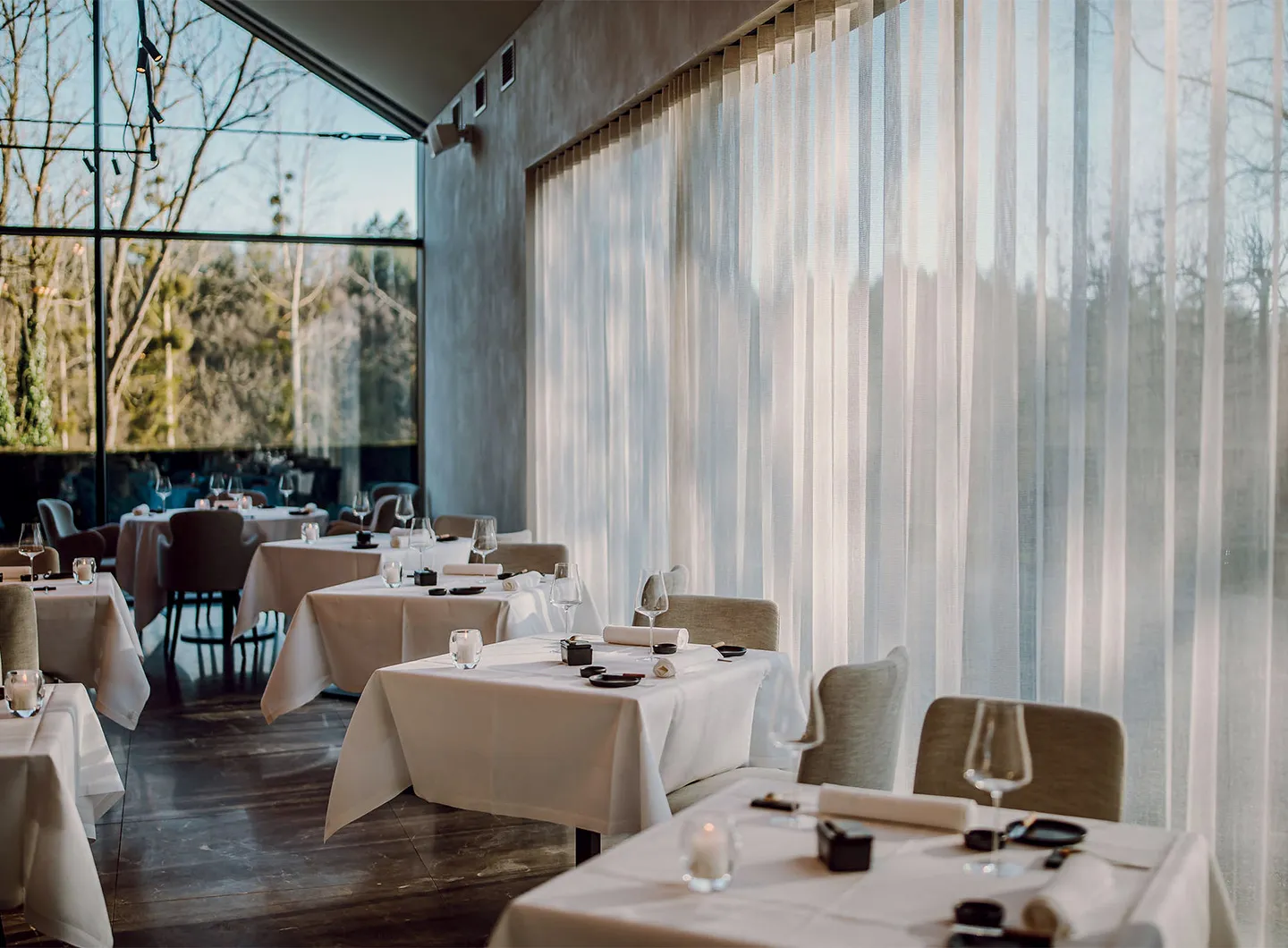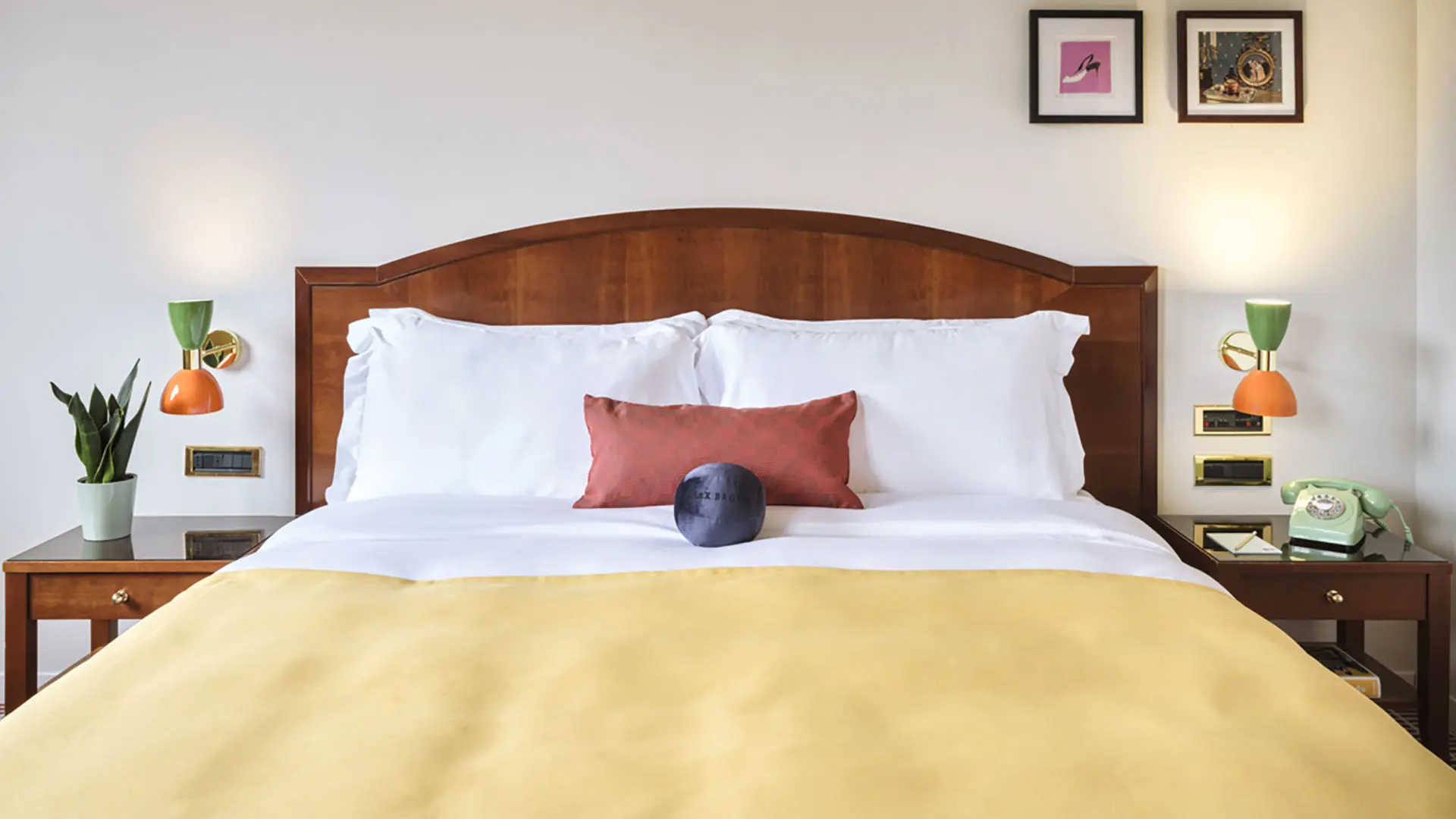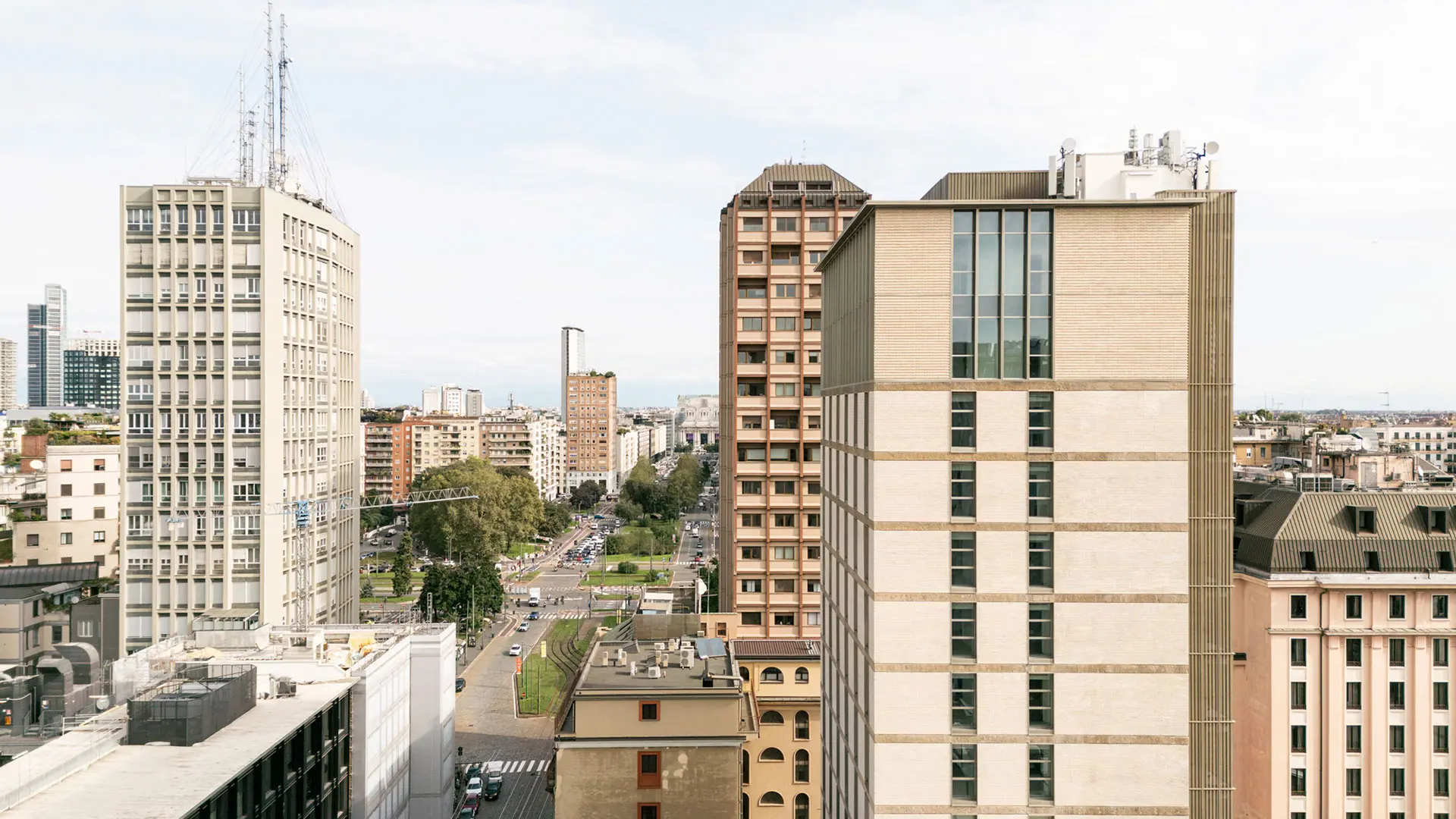In partnership with MiCodmc, a selection of establishments ripe for discovery during the 63rd edition of the Salone del Mobile.Milano, from 8th to 13th April
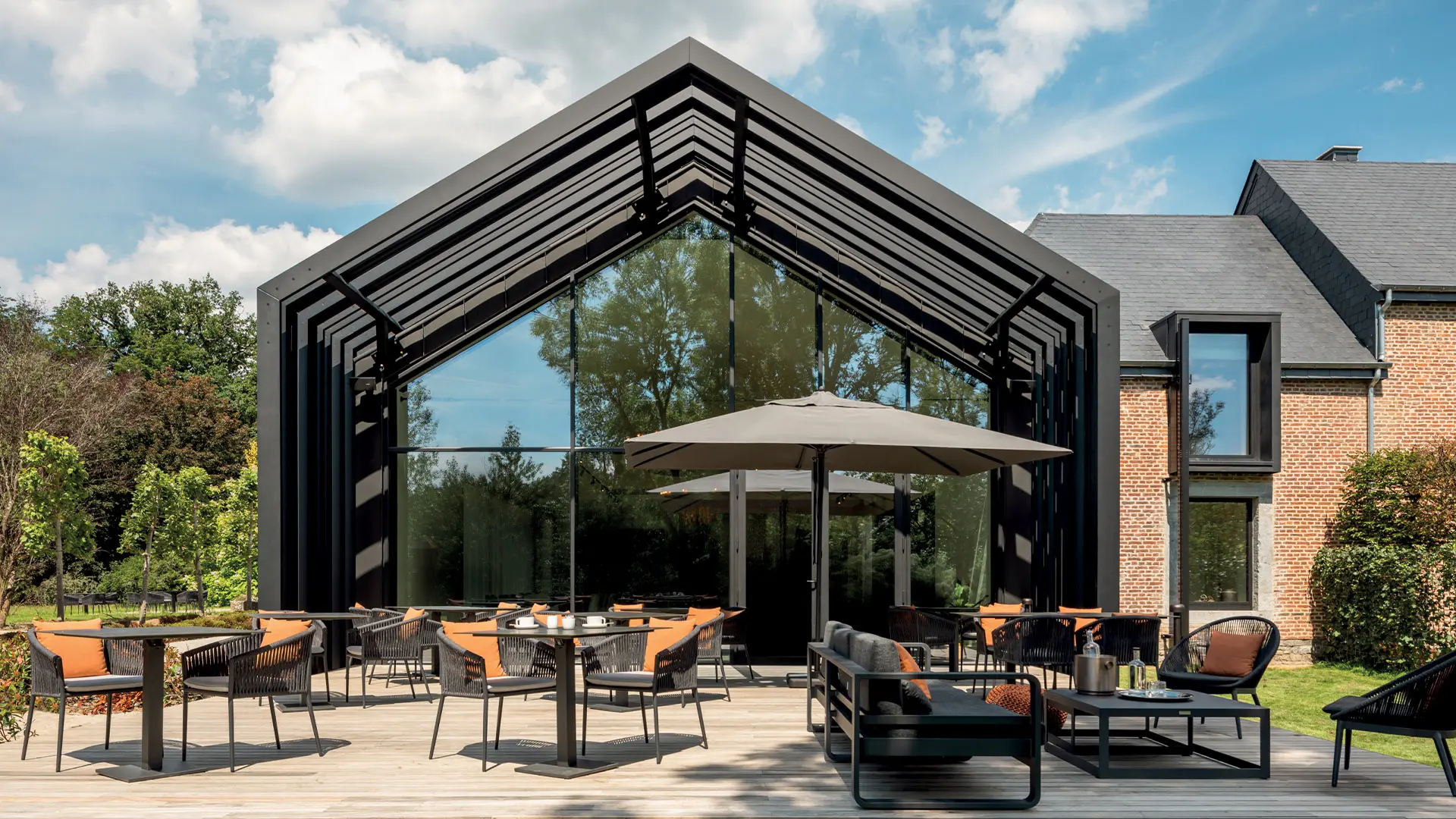
Château de Vignée, courtesy WeWantMore, photo Katoo Peeters
Château de Vignée, in the Belgian Ardennes, dates back to 1658, and is a boutique hotel surrounded by woods and fields, boasting bathrooms designed by Dornbracht e Alape
Deeply rooted in the territory and for centuries a meeting place for local hunters, the Château de Vignée, in the Belgian Ardennes, is now a sophisticated and picturesque hotel. The Belgian design studio WeWantMore has put a new spin on the rustic charm of this former hunting lodge, which dates back to 1658, turning it into a luxury destination for guests in search of relaxation and authentic contact with nature. The materials employed, as well as the well thought-through lighting and colour combinations, inspired by the wild beauty of nature, and the contemporary taste, looks and performance of the Dornbracht bathroom fittings and fixtures and Alape bathroom solutions, are one of the strong points of the entire project.
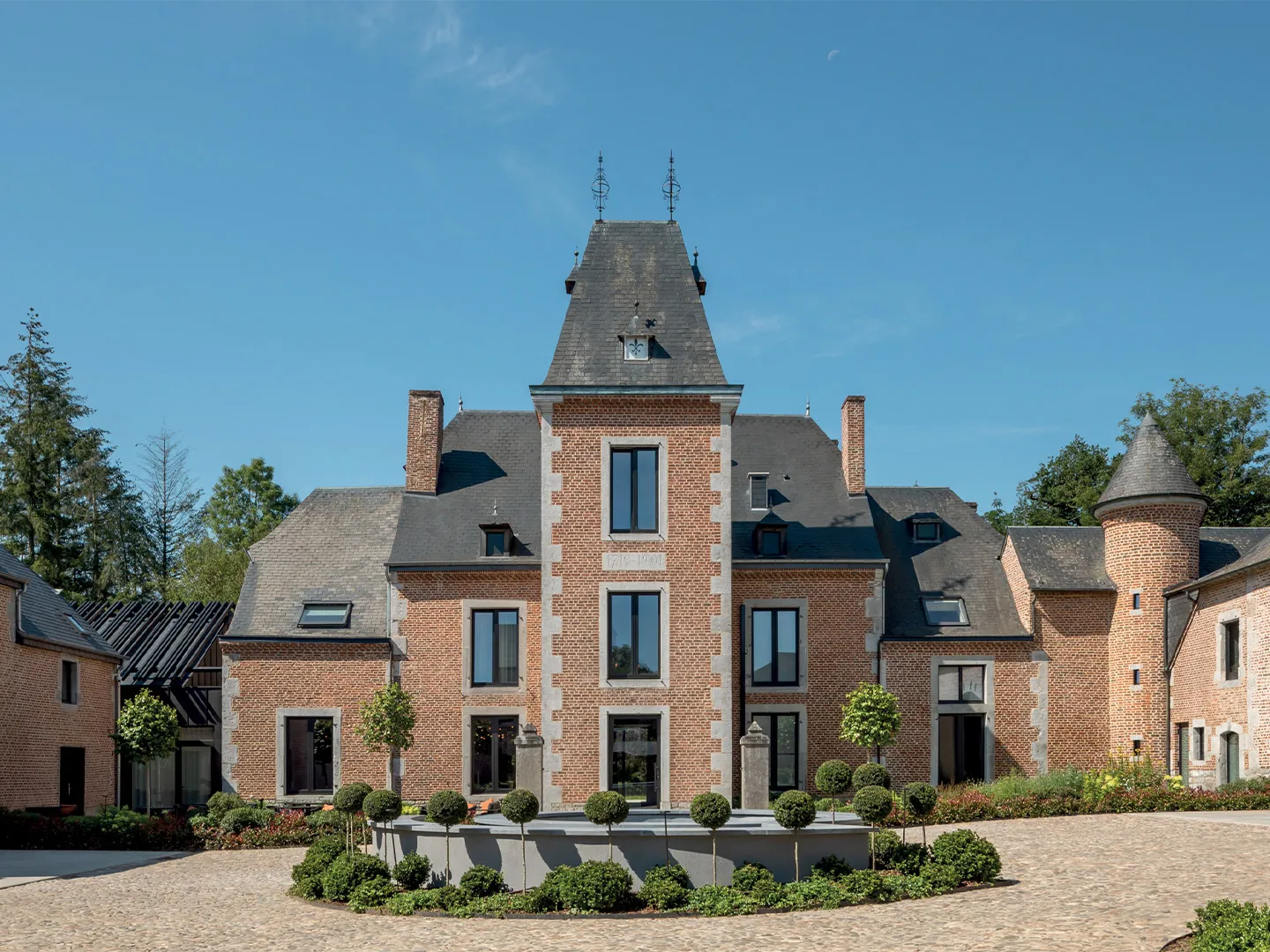
Château de Vignée, courtesy WeWantMore, photo Katoo Peeters
“Dornbracht has invested heavily in the contract sector, residential and hotel especially, over the last 30 years, and supplies for international projects account for a good percentage of our turnover,” said Massimiliano Agostinacchio, Italian Sales Director of the company set up in Iserlohn, in Germany, in 1950, which supplies products to more than 125 markets. “Today, Dornbracht’s main focus is on consolidating its leadership position within the premium sector in every country, introducing targeted strategies for developing and consolidating important relationships with our partners in individual markets as well as specifically supporting architectural studies as related to the selection of products for their projects.”
The interior design at the Château de Vignée was based around the stark beauty of the surrounding countryside with a few touches echoing its 19th century history. As well as liberally renovated rooms, the hotel boasts both a bar and a lounge area, a high-end restaurant and a spa. The spacious junior suite bathrooms are distinguished by marble walls and muted, pale shades. The undermount Alape Metaphor washbasins are a perfect fit here – their reduced, linear form creating an atmosphere of clarity and structure. Rounding off the space, Dornbracht’s iconic Tara tap collection in a matte black finish chimes with the washbasins. The elegant dark shade makes for a pleasing contrast with the powerfully-veined marble. The geometric purity of the mirror and the Assist floating shelf system, both designed by Alape, complete the space.
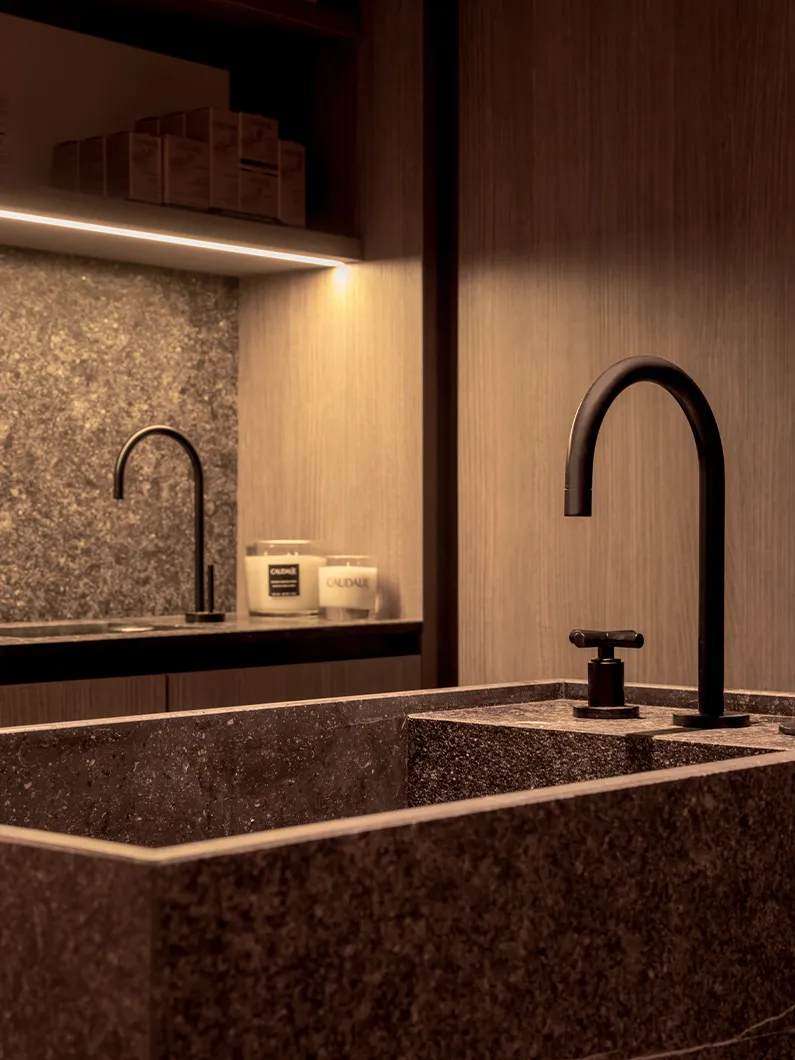
Superior suite bathroom, courtesy WeWantMore, photo Katoo Peeters
“There’s no type of product more important when it comes to the Dornbracht collections, but over the last few years the shower and wellness segment has taken on a fundamental role in both the residential and hotel sectors. Dornbracht has been a pioneer in this field, and having been the first to enter the fray with a targeted strategy and distinctive products, we are the point of reference for the market,” Agostinacchio continued.
Anthracite-coloured marble predominates in the superior room bathrooms. The countertop basins are Alape Unisono. Enamelled steel just 3mm thick, with its non-porous, perfect finish, makes for a highly sophisticated effect. The circular shape of the washbasin is an elegant match for the mirror, which is also round. The matte black finish of the Alape washbasins and Dornbracht’s sophisticated taps and fittings bestow a feeling of intimacy and elegance, along with the soft shades of the marble.
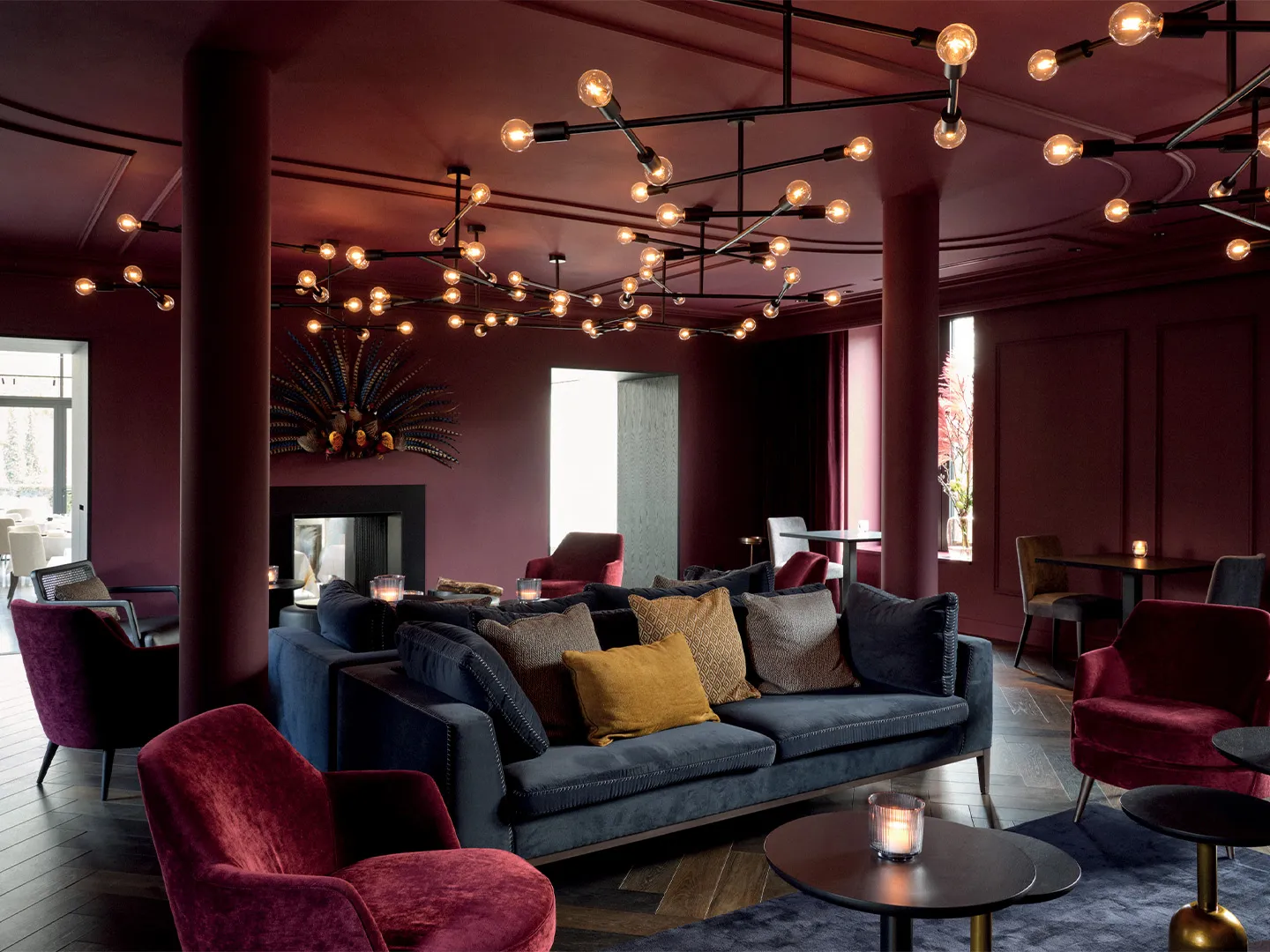
Bar and Lounge area, Château de Vignée, courtesy WeWantMore, photo Frederik Vercruysse
Contract, especially in the premium sector, is crucial for companies such as Dornbracht – a multinational with 27 branches all over the world – also because being suppliers for the most distinctive international projects helps grow the brand’s visibility, becoming a source of inspiration for designers and architects too. “The basic requisite for any company wishing to take on the contract world is to adopt a mindset capable of responding to all the technical and aesthetic demands that a residential, hotel or naval project may trigger: but this type of attitude is very hard to integrate into industrial production, in that every technical variation that provokes a change to the standard line risks endangering the whole process,” added Agostinacchio, stressing that “if a firm is capable of managing specific requests, on both a productive and design level, then it is ready to dip a toe into the contract sector. The product alone isn’t enough.” We then asked him what the correct ingredients for success in the contract sector were: “You need a team with a promoter, a project manager and engineers capable of underpinning the design studies in order to optimise the decisions, draw up the correct specifications and assess any technical and stylistic variations required to bring the product in line with the client’s expectations.”


 Stories
Stories
